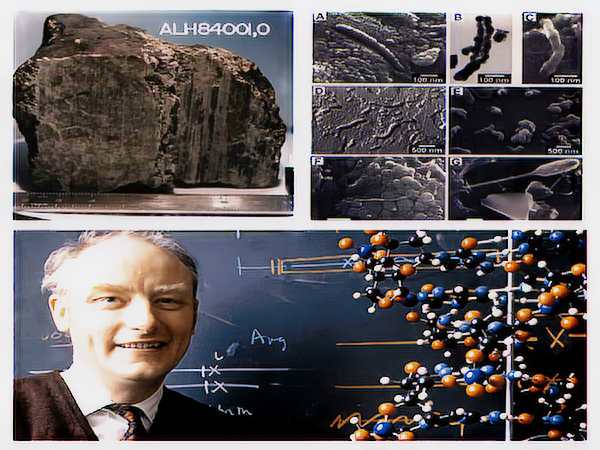Panspermia, the idea that life exists throughout the universe and can travel between planets, has captivated scientists and science fiction writers alike. But what if there’s more to the story? Enter directed panspermia, a bold theory that suggests life on Earth might not have originated here at all, but was deliberately “seeded” by an advanced alien civilization.
The Case for Seeding Life:
The theory of directed panspermia rests on the idea that the complexity of life, particularly the intricate structure of DNA, might be too improbable to have arisen spontaneously on a single planet. Proponents like the Nobel Prize-winning scientist Francis Crick argue that life’s origins could be a cosmic phenomenon, spread from one world to another through meteoroids, asteroids, or even spacecraft.
Evidence from Mars?
The discovery of the ALH84001 meteorite in 1996 fueled the fire of directed panspermia. This Martian rock, found in Antarctica, contained tiny structures resembling fossilized bacteria. While later studies cast doubt on these structures being biological in origin, the discovery ignited debate about the possibility of life on Mars and its potential connection to Earth.
Motives of a Seeding Civilization:
So, why would an advanced civilization “seed” life on other planets? Directed panspermia proposes several scenarios. Perhaps they faced an extinction-level event on their own world and sought to ensure the survival of their species by spreading life elsewhere. Alternatively, they might be “terraforming” planets, preparing them for future colonization by their own kind or other advanced life forms.
Challenges and Mysteries:
Despite its intriguing possibilities, directed panspermia faces significant hurdles. We haven’t found definitive proof of life elsewhere in the universe, let alone an advanced civilization capable of interstellar travel. Additionally, the vast distances and harsh conditions of space make it difficult to imagine how life could survive such a journey.
The Search Continues:
The mystery around life’s origins continues to fuel our curiosity. While directed panspermia remains a fringe theory, it encourages us to think beyond our planet and consider the possibility of life existing elsewhere in the universe. As we continue to explore space with advanced technology, who knows what secrets we might uncover about the origins of life and our place in the cosmos? Perhaps the answer lies not in a primordial soup on Earth, but in the vast expanse of the universe itself.

